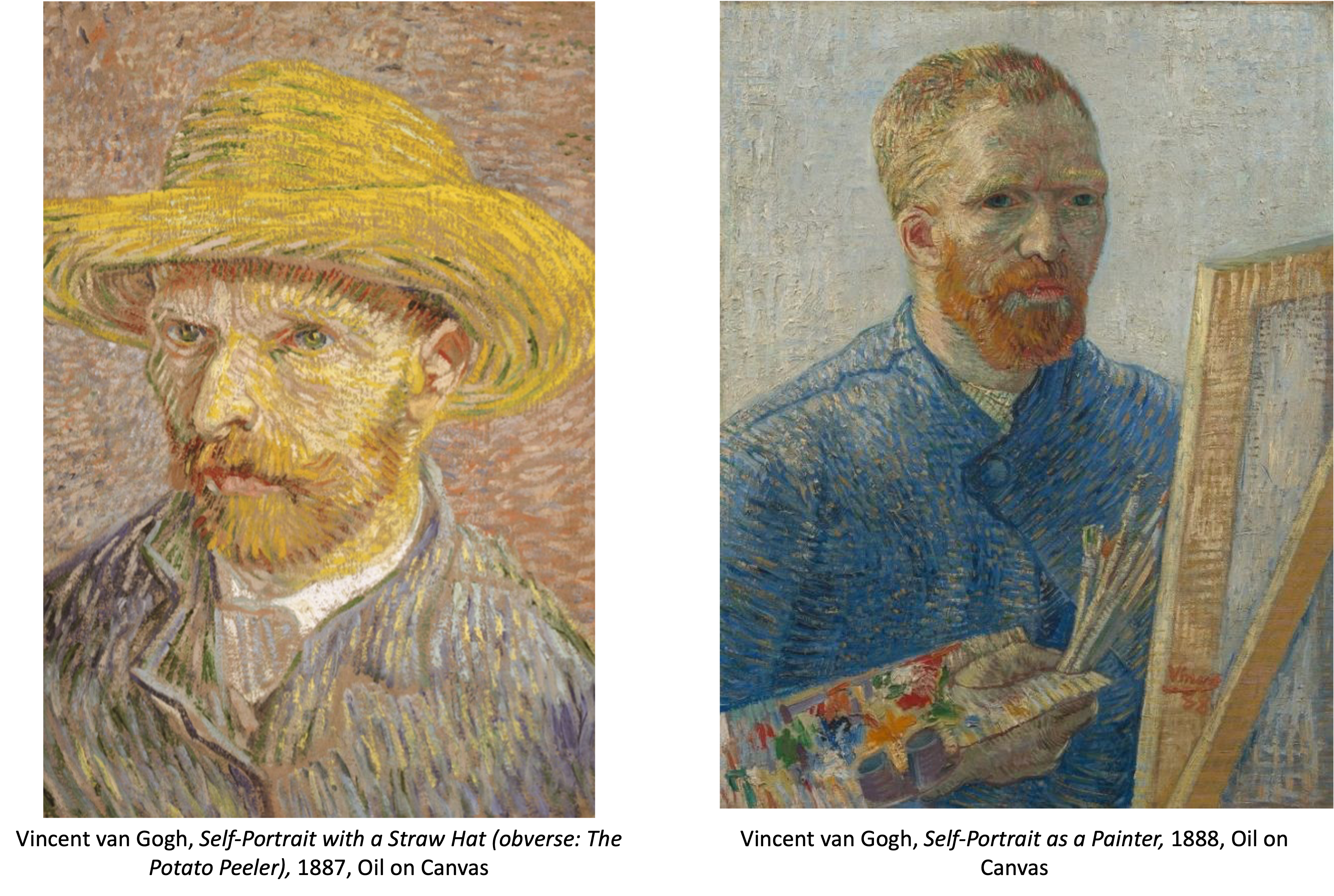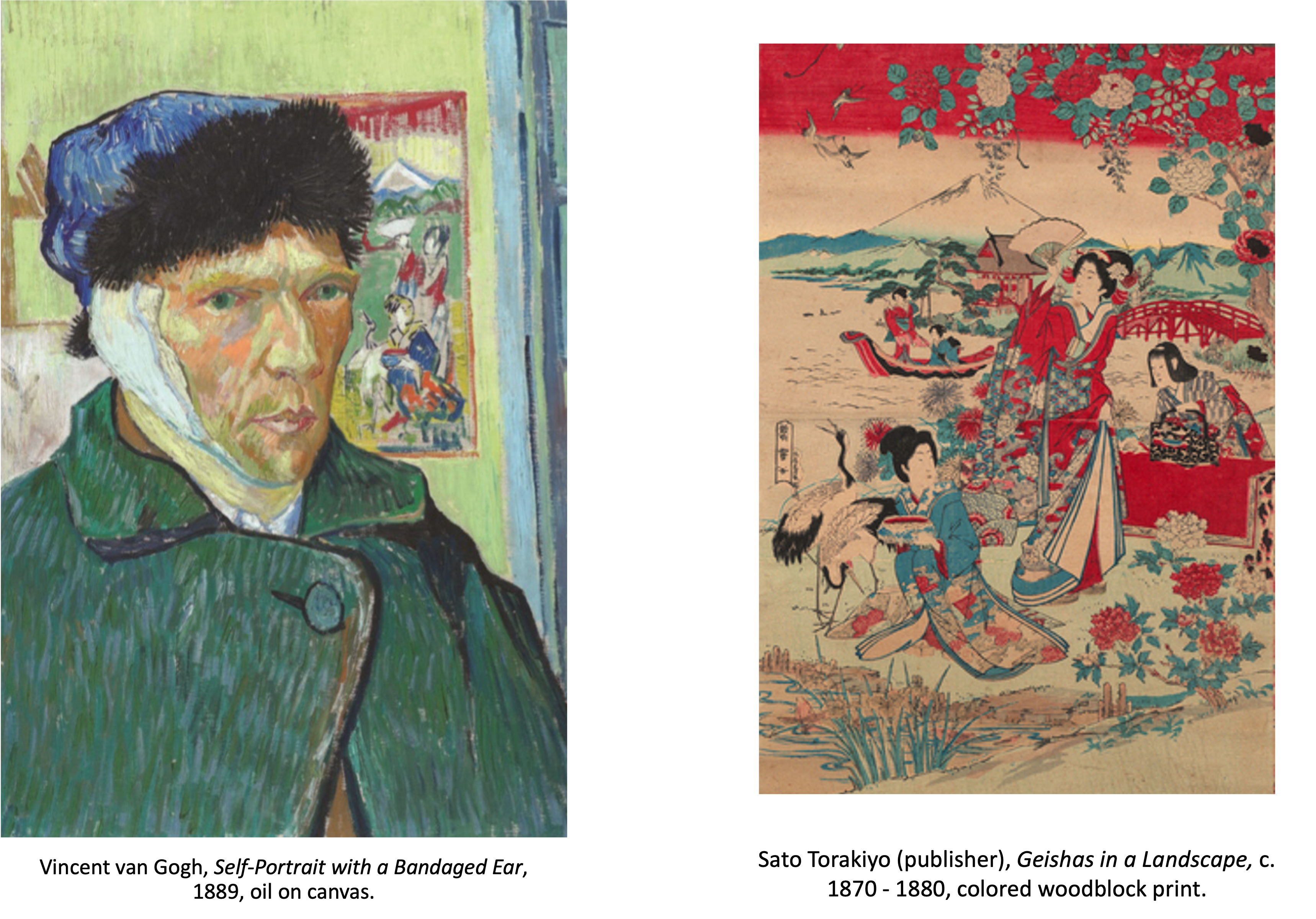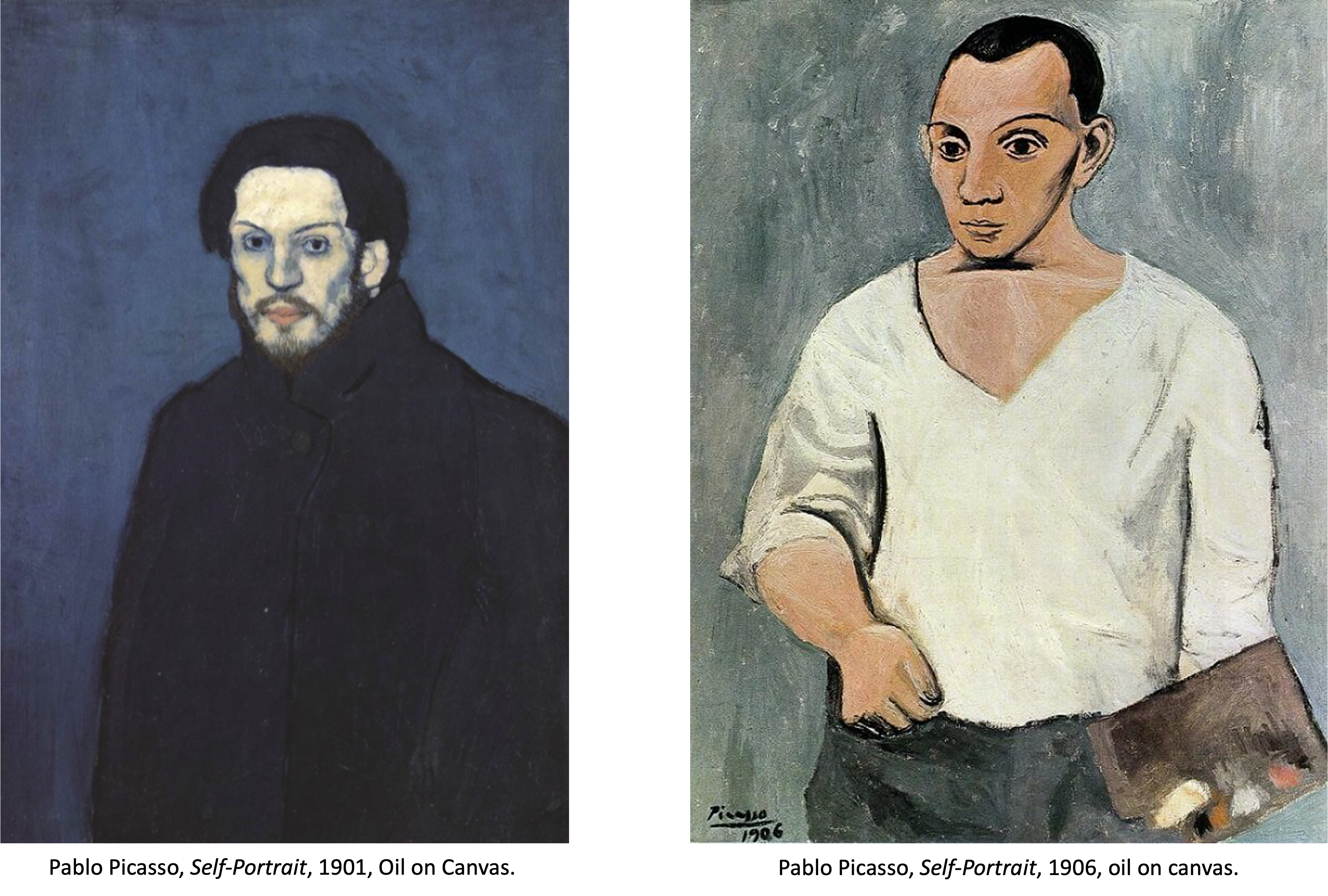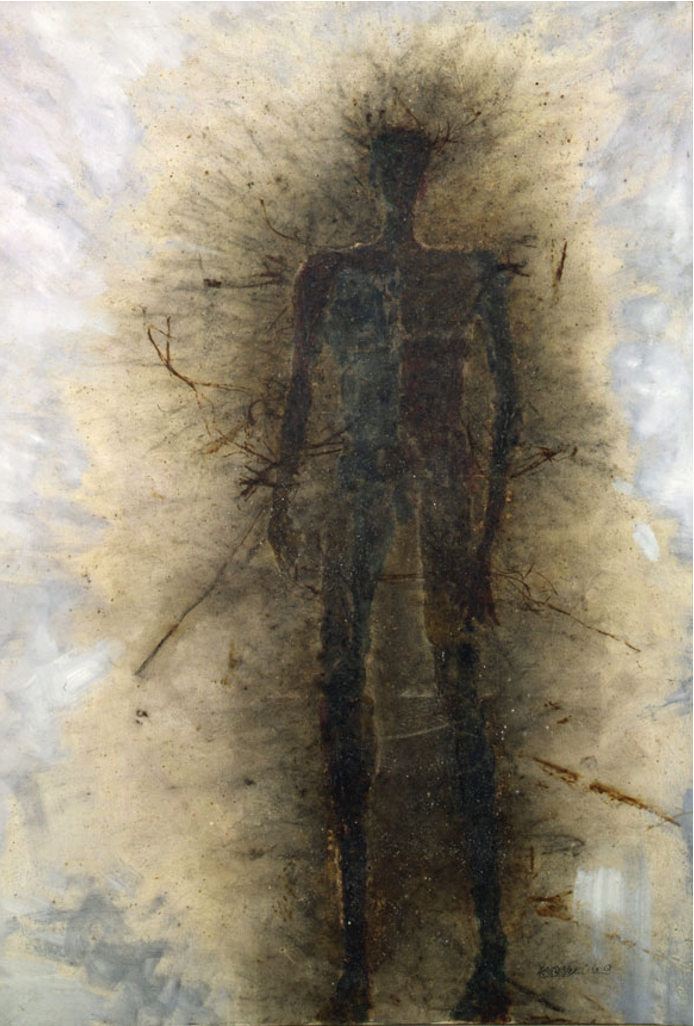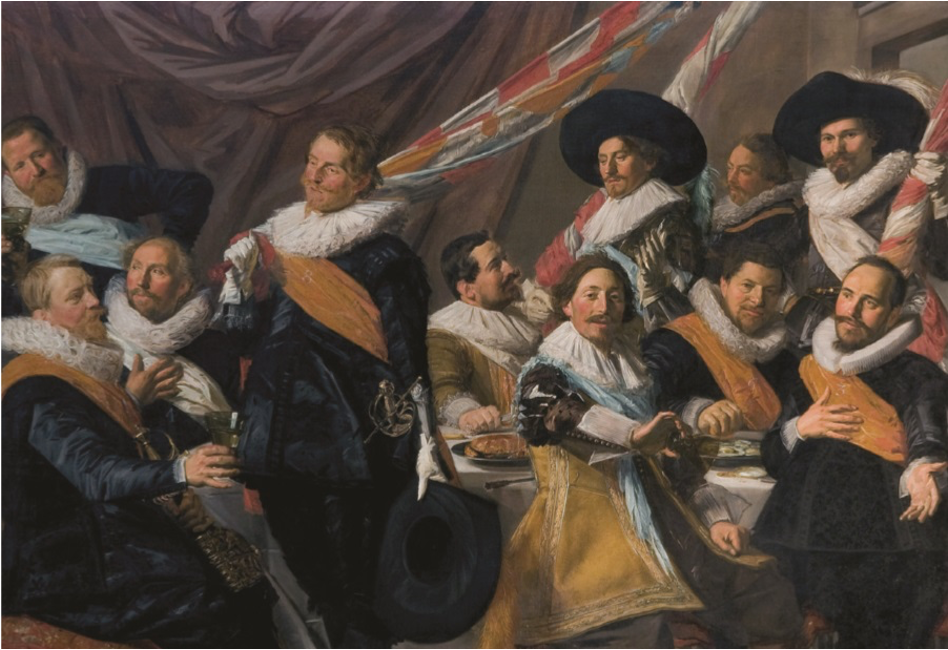- Chapter 8: Art and Identity
- Learning Outcomes
- Exploring Identity
- Individual Identity
- Cultural Group Identity
- National Identity
- Cultural Heritage and Ethnic Identity
- Sex/Gender Identity
- Class Identity
- Francisco José de Goya y Lucientes, Maria Luisa of Parma Wearing Panniers, 1789, oil on canvas.
- Honoré Daumier, The Third-Class Carriage, 1862, oil on canvas.
- Honoré Daumier, The Second-Class Carriage, 1864, watercolor ink wash and charcoal on paper.
- Honoré Daumier, The First-Class Carriage, c. 1862-64, oil on canvas.
- Group Affiliation
- Personal Identity
- Presentation
- Lecture Video
- Quiz
Chapter 8: Art and Identity
Learning Outcomes
After completing this chapter, you should be able to:
- Name and categorize ways that artists explore the concept of identity
- Discuss how art serves as a commentary on society
- Analyze how politics and societal concerns may influence art
- Explain how art expresses individual and group identity
- Show how art preserves national culture and personal identity
Exploring Identity
One important theme over the last century has been the search for identity. Anthropologists suggest the deep-rooted interest in identity is partly shaped by evolutionary forces dating back to early humans supporting extended family groups. Early humans created likenesses of themselves in their environments. These were 2D and 3D. Used to understand who they were within relation to those in their group. We still do this today, most commonly in photographs. Above all we must place ourselves within the world in order to obtain identity. Artists are known to explore their identity through self-portraits as well as symbolically in work of art that relate to ancestry or culture.
Vincent van Gogh
Self-portraits allowed artists to look inside and see how they fit within their contemporary culture. It plays an important role in how they understand their environment and the world. Vincent Van Gogh created more than 30 self-portraits between 1886 and 1889. Known as a person who spent much of his time in solitude he was studying not only artistic style but where he fit in society. Some of his most respected works are the self-portraits that trace his image in the last years of his life. They give us insight into the artists life and well-being. He arrived in Paris in 1886 and changed his artistic style. He went from a very dark palette to embrace bold color of the French contemporaries. He was low on funds so he purchased a good mirror to be able to practice the human form with his own. He also reused canvases for these studies. This is one of several he completed with him wearing a straw hat.
- https://www.vangoghmuseum.nl/en/art-and-stories/stories/5-things-you-need-to-know-about-van-goghs-self-portraits
- https://www.metmuseum.org/art/collection/search/436532
- https://www.metmuseum.org/art/collection/search/438722
Self-Portraits as a painter, completed in 1888 was the last work Van Gogh completed in Paris. How does Van Gogh look different here? What do you think this tells us about the subject? Working in Paris had exhausted Van Gogh both physically and mentally. He wrote about this portrait that he saw himself with ‘wrinkles on his forehead and around the mouth, stiffly wooden, a very red bead, quite unkempt and sad’.
- https://www.vangoghmuseum.nl/en/collection/s0022V1962
- Does the subject look different here? How so?
- What does this painting tell us about the subject other than what he looks like?
Van Gogh left Paris to live in the South of France. His goal was to set up a studio with fellow artist Paul Gauguin (go-gan).This self-portrait was completed in 1889. Why is his ear bandaged? What does this say about the subject? Does the blank canvas and Japanese print in the background have any meaning? Painted two weeks after he cut off his left ear. Possible he was trying to show he could follow doctor’s orders, he is keeping warm (hat & coat), getting fresh air (windows open), and taking care of his wound (wearing the bandage). Van Gogh saw the artist of Japan as the perfect meeting point of theory and practice. He shared a passion for depicting lives of the poor with Japanese artist Hokusai, Van Gogh hoped to bring this idea to the Impressionists. Van Gogh yearned for fellowship and saw the Impressionists as he imagined the Japanese artists. A united body of artists, sharing the same goals and ideals. This gave him a sense of belonging and was his goal for heading to the South of France. He hoped to create a fellowship of artists. Shifted Japanese print so heron’s beak is at his ear and ghastly image of flowers on blank canvas, give a hint that his dream of artist’s community has turned against him.
- https://smarthistory.org/van-gogh-self-portrait-with-bandaged-ear/
- Why does this subject have a bandaged ear?
- What does that say about the subject?
- Blank canvas in background: artistic work to be done?
- Japanese Print in background: influence on his painting style?
Pablo Picasso
Pablo Picasso painted a number of self-portraits from age of 15 – 90. Reflected changes in himself, his style, and his artistic development. What kind of mood is given off by this self-portrait? Painted at the start of his Blue Period several months after the suicide of a close friend. It shows the deep depression he suffered. His face is gaunt, with a pallor apperance. Picasso was only 20 at the time but appears much older.
How does this self-portrait differ from the first one? Painted at the end of his Rose Period. Picasso depicts himself as the artist who was moving in artistic circles, gaining respect, and acquiring patrons. He was also seeking inspiration and new ideas from art of the past. Took the stylized rendering of the face, large eyes and pupils, and long ears from sculptures of the ancient Iberians. Shown in act of creative thought with paint palette but no brush.
Frida Kahlo
Frida Kahlo created self-portraits using her iconography of her Mexican heritage to show herself and the pain that was a big part of her life after a bus accident at 18. Her self-portraits are dramatic, bloody, brutal and overtly political. In the Two Fridas why did she paint herself twice? Painted the year she got divorced from Diego Rivera. We see two versions of Kahlo holding hands and connected by a vein. One has a broken heart with a clamp trying to stop the bleeding. The other has a whole heart with a vein connected to a tiny portrait of a young Diego. Double self-portrait though laden with suffering exhibits resilience
- https://smarthistory.org/kahlo-the-two-fridas-las-dos-fridas/
- https://www.fridakahlo.org/the-two-fridas.jsp
What mood and feeling comes from this self-portrait? Graphic depictions of Kahlo experiencing torment are a stark insight into her own struggles against physical adversity and pain. Painted after spinal surgery when she was forced to wear the steel corset she shoes in the image. This is different from her other self-portraits cause she is not surrounded by nature or friendship. She is broken & alone just like the barren broken background. Nails can be seen as symbolic of Christian Martyrdom or seen as an indication of the emotional pain caused by Diego
Cai Guo-Qiang
Self-portraits today may be slightly different from earlier ones but they still depict self-exploration and identity through society and groups that communicate who we are. This self-portrait by Cai Guo-Qiang is dramatically different from those we have looked at. How so? Created originally in 1985 using gun powder on oil canvas. The use of gunpowder showed his cultural nationalism as it was a famous Chinese invention. He never showed the work in China, he was afraid it would be seen as unpatriotic due to the use of gunpowder. It reflects the tumultuous emotions he was experiencing. In 1986 Cai left China for Japan. In 1989 he reworked the piece, repainting the background and adding the subtitle after the events in China in Tian’anmen Square. How does the new title change the meaning of the work? New title projects feelings of alienation and loneliness the expatriate felt separated from his homeland
Individual Identity
- Romantic Period valued and celebrated individual originality
The thought of art and artists brings the idea of a solitary process. During the Renaissance and Middle Ages artists work as part of a guild usually in a large workshop. By the late 18th century, the Romantic period, until around 1850 artists were associated with individualism and working alone. The Romantic period valued and celebrated individual originality. Valued the expression of the artists’ feelings,personal imagination, and creative experimentation. William Blake was a Romantic period artist who held feminist views that women should be able to marry for love. Oberon, Titania, and Puck with Fairies Dancing is a whimsical watercolour showing the happy ending of the intense love affair between Oberon and Titania, this mirrors Blake’s own love affair with his wife. Exemplifies the luminous and dreamlike qualities of the Romantic movement.
Cultural Group Identity
In the medieval to the Baroque periods artists worked together in workshops and guilds. They focused on systematic artistic training. Large scale commissions often required numerous hands to complete a work. The work was still expected to have a consistent style and quality of craftsmanship. Artists often specialized in a particular type of subject matter. Peter Paul Rubens and Jan Brueghel the Elder collaborated on more than 20 paintings. One example is this Madonna in Floral Wreath. Rubens painted the figures showing his skill in the serenely glowing face of the Virgin Mary and energetic cavorting of the cherubs. Brueghel painted the arrangement of flowers with accuracy and delicacy showing his skill in nature scenes. A Yale university study found the perception of high quality art today is that produced by an individual. Not the norm around the globe. Value of art located in the single artist maybe more specifically based in certain cultures. Seeing more collaborating among artists in the 21st century.
National Identity
- Oba: Divine King
Art can show the importance of national identity. This 19th century brass head of an oba, or the divine king, from the Kingdom of Benin is not meant as a portrait of an individual king but shows the divine power of the king. This shows the national identity of the Kingdom of Benin lies within the Oba.
John Trumbull, General George Washington at Trenton, 1792, oil on canvas.
- Patrons rejected image, wanted a calm, tranquil, and peaceful image.
Art can be used to celebrate national heroes. Charleston city council hired John Trumbull to paint a life-size portrait of George Washington. They wanted to be able to ‘hand down to posterity the remembrance of the man who’ they felt indebted to. Trumbull portrayed Washington as a stead fast and majestic general, this was his idea of the best way to honor Washington. Charleston City Council rejected the image and said they wanted a “matter-of-fact likeness”.
Anthony van Dyck, Charles I at the Hunt, 1635, oil on canvas.
- Dyck used informal yet dignified stances
American artists unfortunately had no clear model for a “matter-of-face likeness”. Many used examples from portraits of European royalty and heads of state. One example was Anthony van Dyck’s ‘Charles I at the Hunt’. The pose Dyck used quickly became the favorite pose for non-ceremonial portraits. The Charleston City Council did not feel the pose was appropriate to represent the leader of a democratic nation.
The Charleston City Council also felt since the portrait was to commemorate Washington’s visit to Charleston the battle setting needed to be changed. Trumbull painted another version of the portrait. He kept the pose virtually the same but lightened the sky and inserted a view of Charleston Bay.
Cultural Heritage and Ethnic Identity
Art can be used to show cultural and ethnic identities. Cultural and ethnic identities share history or common memories. Identity is built on a foundation of what distinguishes someone or something. Thomas Jefferson brought the Neo-Palladian Style from France and started the Neo-Classical Style. This linked American heritage with Ancient past and their ideas.
St. Basil Cathedral, Moscow, 1561
Russia developed cultural characteristics and ethnic identities distinctly their own. Russia’s cultural heritage is vividly stunning from folk costumes to elaborate religious symbols and churches. St. Basil Cathedral in Moscow is an Orthodox Church that symbolizes Russia’s heritage. Shows unique architecture and bright vivid colors.
Peter the Great, Tsar of Russia, set out to modernize Russia. He traveled Western Europe and implemented governmental reforms and adopted cultural norms he saw there. He especially adopted French cultural ideas. Peter the Great chose Carlo Bartolomeo Rastrelli and his son Francesco Bartolomeo Rastrelli to introduce Russian new conventions and styles of heritage and identity.Carlo Bartolomeo Rastrelli’s bust of Peter the Great is strikingly similar to portrait bust of French King Louis XIV by Gian Lorenzo. Shows absolute authority through the left of the head, eyes scanning the distance and wearing of military armor.
Winter Palace, St. Petersburg, 1711
Francesco Bartolomeo Rastrelli was an architect in the Baroque style who was known for his opulent and imposing buildings that continued the modernization and transformation of St. Petersburg. One of the most famous buildings is the Winter Palace in St. Petersburg which shows an amazing resemblance to the French palace at Versailles.
Sex/Gender Identity
Works of art are used to express ideas of sex and gender identity. Kevin de Wiley is a contemporary portrait painter. Wiley refers back to poses and other compositional elements by earlier masters. Wiley wants his viewers to recognize the earlier works he borrowed from. Due to the strong contrasts between the two image, the comparison often makes for a complex interweaving of meanings. Wiley’s 2008 painting is based upon an 1847 marble work by Auguste Clesinger. Original piece shows nude writhing from a snake bite. Coupled with the roses it suggests an allegory of love or beauty lost in its prime. Clesinger saw his work as a study of human form Wiley’s work was clearly a portrait. How does the clothed male figure change the image? The artist uses juxtapositions of meaning to challenge our notions of identity and masculinity. Indecency, exposure, vulnerability, powerlessness.
Tejal Shah, Southern Siren—Maheshwari (from the hijra fantasy series), 2006
- Tableau – a staged scene
Gender identity has become more fluid in reagent years in some cultures but within others there has traditionally been a third gender. Ancient Greeks had hermaphrodites. Samoa has fa’afafine – a male child draw to domestic life and raised in manner of woman. India had hijra – a third gender that includes eunuchs, hermaphrodites, and transgender. Traditionally related to spirituality often devoted to god or goddesses. Tajal Shah created a Hijra Fantasy Series creating tableauxs in which Hijras enact their own personal fantasies of themselves. Shah was interested in how each woman envisioned her own sexuality separate from perceptions of others. In this image the protagonist envisions herself as a classic heroine from South Indian cinema.
Class Identity
Art can also be used to shows individuals within their class standings. Maria Luisa of Parma was a member of the highest circle of European royalty. She had several portraits over he lifetime showing her standing in society. Royal marriages were intended to foster alliances. The engagement portraits were used to introduce brides to grooms. Only way to learn what the bride looked like. Bride holds gift for groom, snuffbox with his image, to express appreciation and budding affections. Shows likeness of bride but more importantly shows statement about the prestige and power she will bring to the marriage.
Francisco José de Goya y Lucientes, Maria Luisa of Parma Wearing Panniers, 1789, oil on canvas.
This portrait done 24 years after her engagement portrait. Goya was not kind in his depiction of Maria Luisa. She is more richly dressed but that is in contrast to her demeanor. Why would the court painter create such an unflattering image? She had not endeared herself to her subjects. She was vain and bad-tempered. Meant to communicate power and prestige.
Honoré Daumier, The Third-Class Carriage, 1862, oil on canvas.
Honore Daumier painted a different sign of prestige, or lack thereof in a series of paintings about classes within Carriage cars. He was interested in the impact of industrialization on modern urban life, the plight of the poor, the quest for social equality, and the struggle for justice. Third-class Carriage shows passengers sitting near each other but isolated their body posture and facial expressions convey toll of hard labor and long hours. Daumier shows compassion for these workers whose lives hold nothing but repetition and drudgery.
Honoré Daumier, The Second-Class Carriage, 1864, watercolor ink wash and charcoal on paper.
Daumier represents different life expectations based on class. Second-Class Carriage has less people, but still unheated. Still see the toll of labor but also the possibility of moving up in the buisness world.
Honoré Daumier, The First-Class Carriage, c. 1862-64, oil on canvas.
In the First Class Carriage people are shown confident with relaxed postures. Have a composed expression. Enjoys the world outside the windows.
Group Affiliation
History suggests that the quality of human survival is best when humans function as a group. Art can show this group affiliation. The unity of groups is achieved through members’ similarities of their having experiences based on history that brought them together. The most visible groups during the Renaissance for example were people belonging to the Catholic Church or other religious. organizations, wealthy merchant families, civic and government groups and guilds. This is an example of a work showing group affiliation.
Frans Hals, Officers of the St. George Civic Guard, Haarlem, 1616, oil on canvas.
Another example of group affiliation work of art.
Personal Identity
Personal identity can be shown in art of many forms. Stele are a way to show the personal identity of the deceased. This example is from the city of Palmyra, a crossroad of Western and eastern influences. The fine fabrics show the wealth of the family and the individualized features and inscriptions denote the characteristics of the persons within. National and personal identity are built on and influenced by immediate and past events, environments, traditions, and cultural legacies. They construct a sense of who we were and are as a person and as a nation. Art is a great way to explore these identities.

